A Visit to Sambata de Sus and the Brancoveanu Monastery
This destination guide details my visit to the Brancoveanu Monastery (Mănăstirea Brâncoveanu) just outside the village of Sambata de Sus.
Last day in Transylvania
After a great night at the Brukenthal Palace in Avrig, I left the hotel early the next morning for the final day of my road trip across Transylvania.
The focus of this day was more on the mountain scenery of the Carpathians rather than the Saxon fortified churches, of which I had visited quite a few in the previous days.
Before driving into the mountains, I would however first visit the famous Brancoveanu Monastery in the nearby village of Sambata de Sus.


Road to Sambata de Sus
It was a straightforward 45-minute drive from Avrig to Sambata de Sus.
The drive led me first on the main provincial road (DN1) towards Sambata de Jos, where I took a right-hand turn onto the 105B towards Sambata de Sus.
This road turned out to be an absolute stunner.
Although some morning fog meant that there were no views as such at the beginning of my drive and I had to be extremely careful on the busy main road, the smaller 105B road was an absolute pleasure to drive.
By this time the fog had cleared up and I was driving straight towards the Carpathians, the mountain backdrop was absolutely stunning.

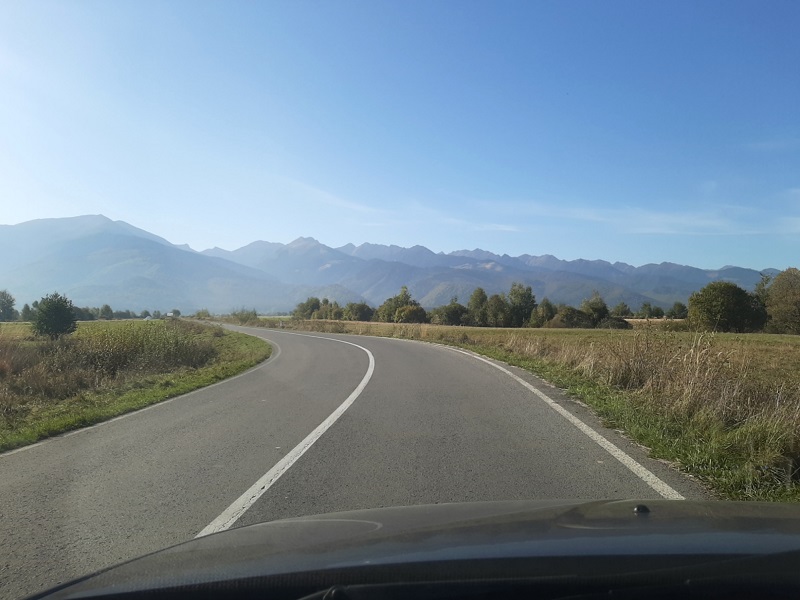

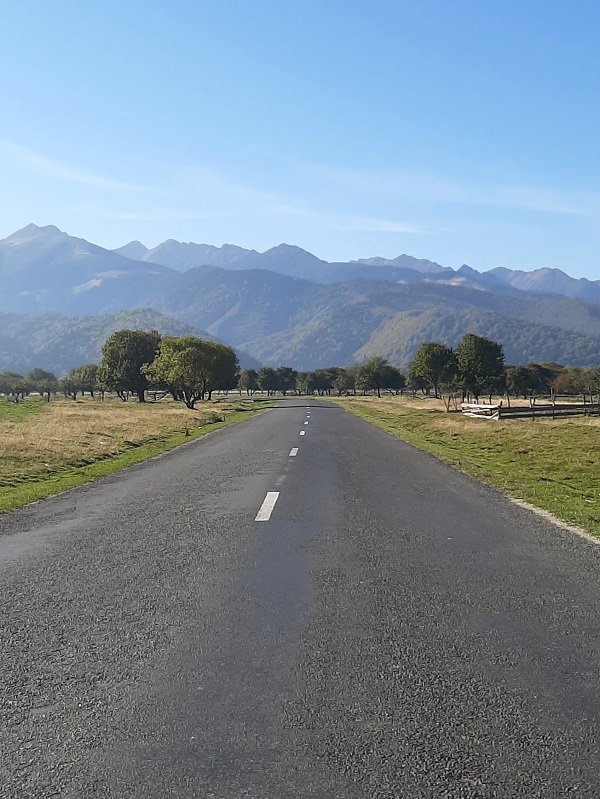
Brancoveanu Monastery
After a beautiful drive, I arrived at the parking lot of the monastery.
In the Romanian language, the monastery is known by two names that are used interchangeably: Mănăstirea Sâmbăta de Sus, named after the village it is located in, and Mănăstirea Brâncoveanu, named after its founder.
The village of Sambata de Sus and its surrounding lands were acquired by the powerful Brancoveanu family in the mid-17th century.
Around 1696, Constantin Brancoveanu, the Prince of Wallachia, made the decision to construct a stone church on the site of an old wooden church in Sambata de Sus.
Over the years, a complete monastic complex developed around the church, encompassing a school, printing house, and fresco painting workshop.
However, even the mighty Brancoveanu family was powerless to stop the Habsburgs when the Austrian Imperial Court decided that the monastery should be disbanded.
In 1785, the Habsburg Imperial Army devastated the monastery, causing the majority of the monks to escape across the Carpathians from Transylvania into Wallachia.

Reconstruction
Following the collapse of the Austro-Hungarian Empire after World War I, Transylvania was reunited with Romania in accordance with the provisions of the Treaty of Trianon.
The ownership of the monastery lands was transferred to the Romanian Orthodox Church, more specifically, to the archdiocese of Sibiu.
Nicolae Bălan, the Archbishop of Sibiu and Metropolitan Bishop of Transylvania, made the decision to restore the monastery to its former glory.
The restoration works commenced in 1926, and the monastery church was ultimately completed and consecrated in 1946 during the reign of King Mihai I, whose regal portrait remains visible in the church.
While the Brancoveanu Monastery therefore boasts a rich history, it is worth noting that all the structures you will encounter during your visit are less than a century old.

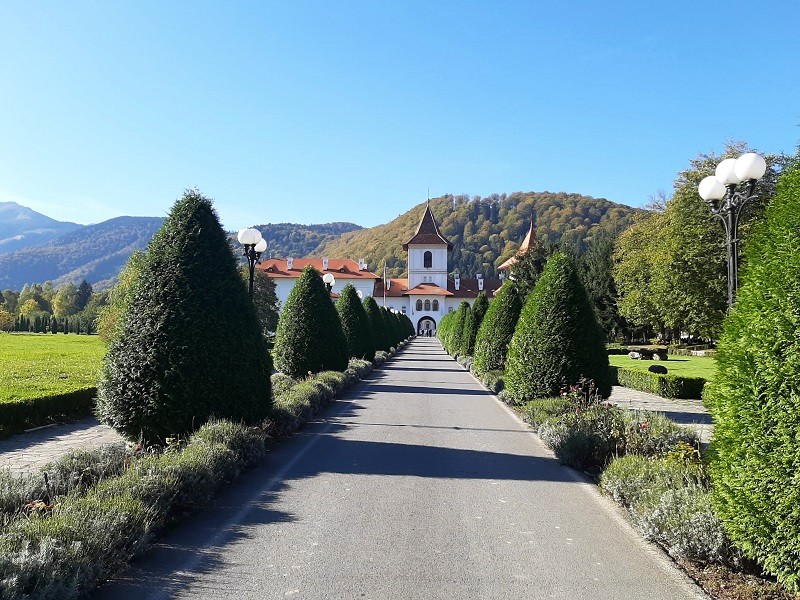
Outer buildings
As you stroll along the footpath towards the main monastery complex, you will first come across some outlying buildings.
Among these outlying buildings are a monastery shop where you can buy religious icons and other objects, as well as a chapel where you can light some candles.
As is customary in Orthodox churches, you use the place designated with “vii” if you want to light your candle for a living person, and use the section “morţi” if you want to do so for a deceased person.
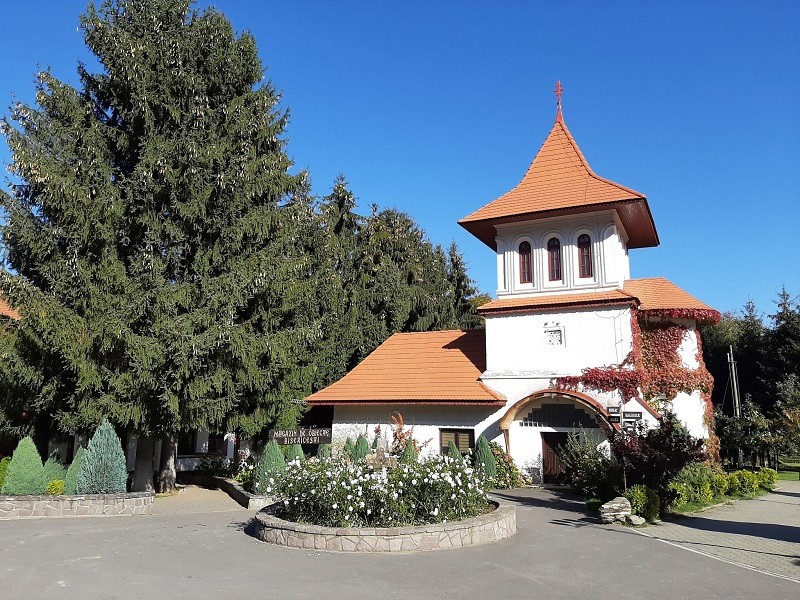

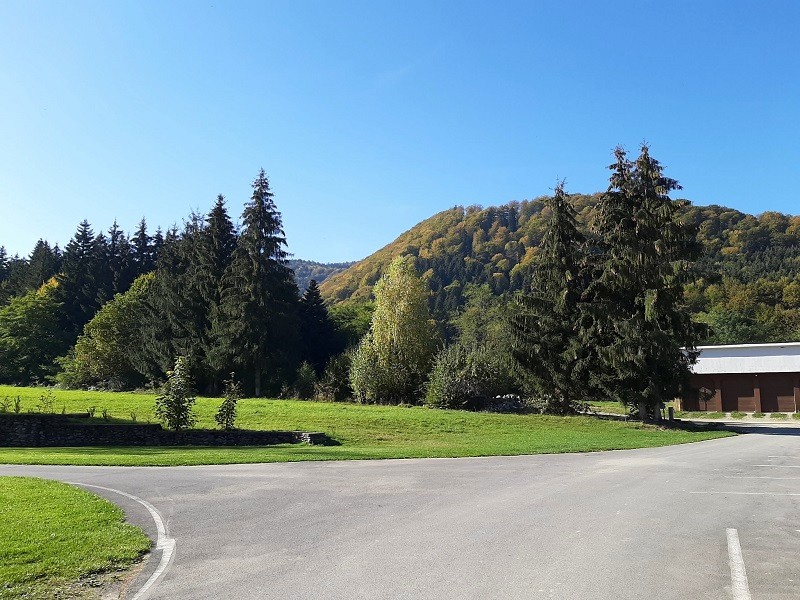
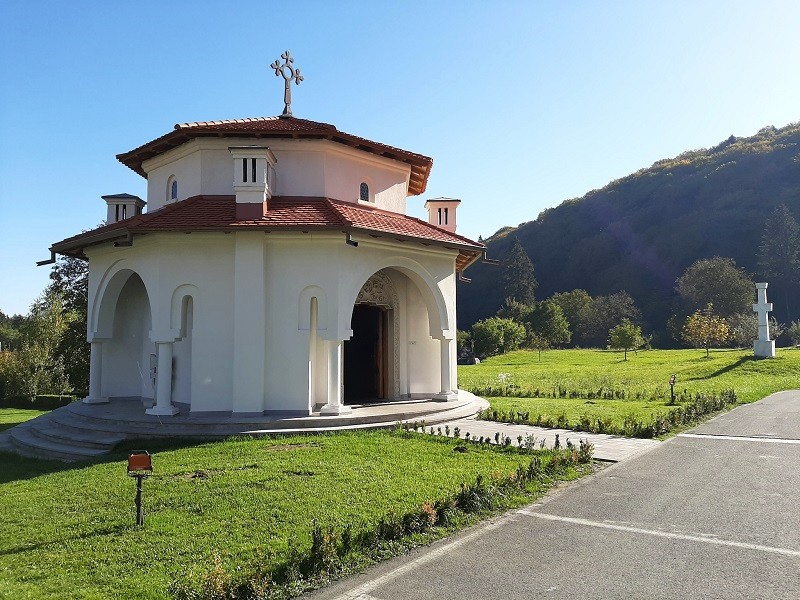

Gate tower
You enter the monastery through a wide passage built into the bell tower.
The gate tower features colorful frescoes on the inside of the passage, which are well worth a closer look.
Additionally, there is a plaque on which a short history of the Sambata de Sus Monastery is written in Romanian.


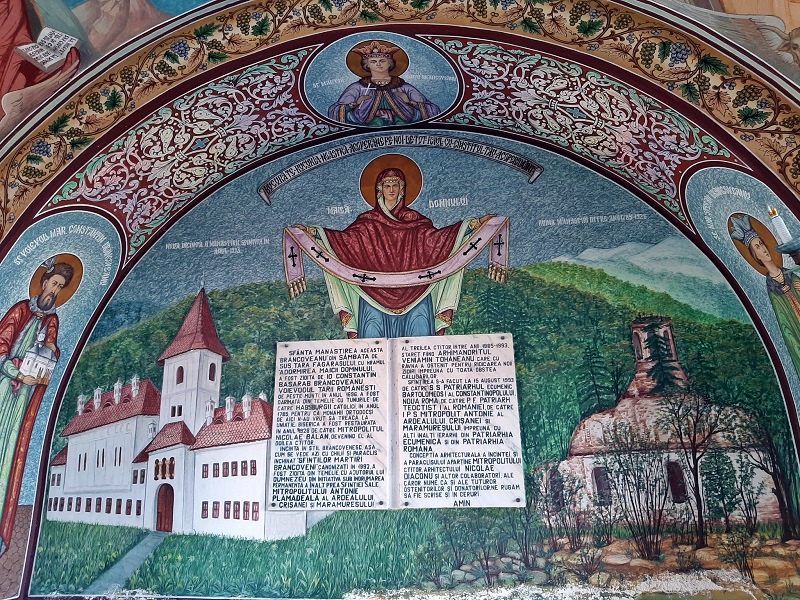
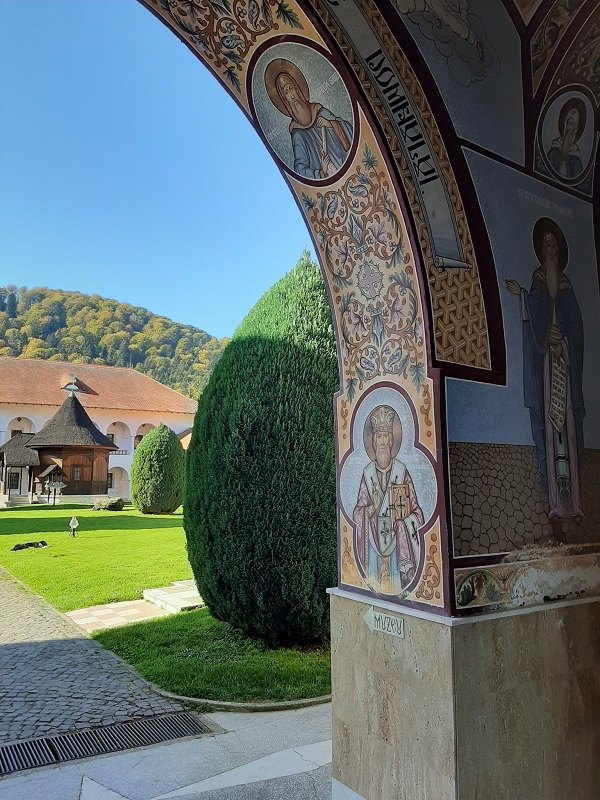

Inside the monastery
The monastery complex is built around the main church, which stands in the centre of a well-kept grass garden.
It’s without doubt a serene setting, as the whitewashed church and monastery buildings harmoniously blend with the forested hills behind.


Monastery church
Unfortunately, the doors of the monastery church were firmly locked when I visited, and there was no monk in sight whom I could ask to open it.
However, I was able to admire the beautiful frescoes on the walls and ceiling of the front porch of the church


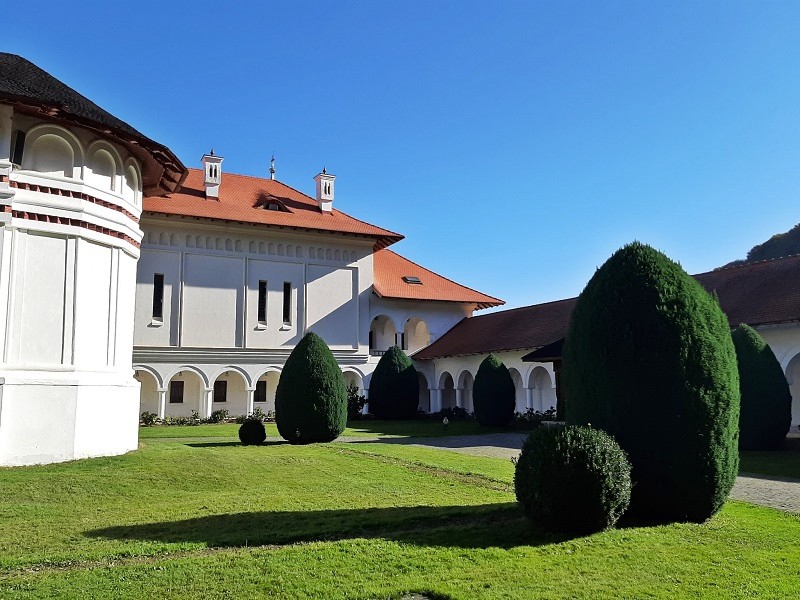
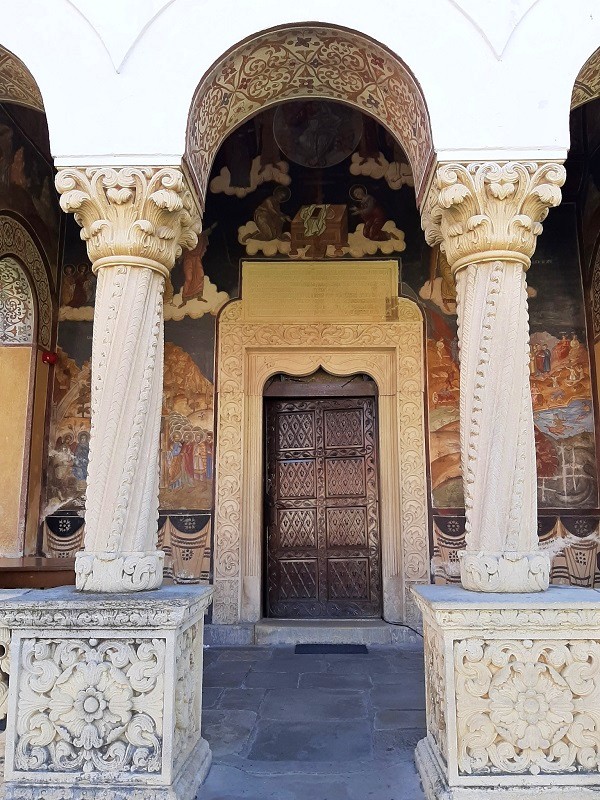
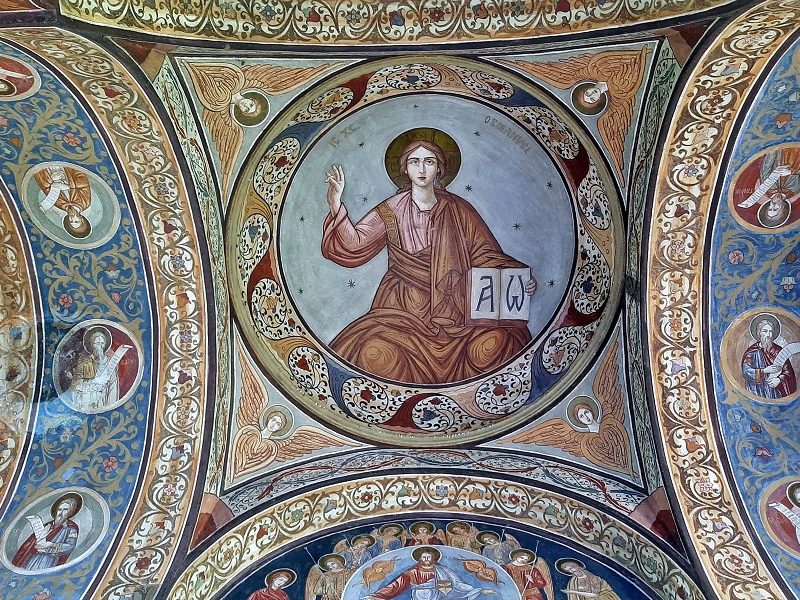
Brancovanesc architecture
The monastery in Sambata de Sus is a fine example of an architectural style that is known in Romania as Brancovanesc Architecture (Brancoveanu-style architure).
As one might expect, this artistic style is named after Constantin Brancoveanu, as it emerged during his reign and continued to be popular long after.
Brancovanesc architecture is essentially a fusion of Byzantine, Ottoman, and Renaissance styles which was developed at the time when Wallachia was still a vasal state of the Ottomans.
You can clearly see this quintessential Romanian architectural style if you look at the loggia right next to the gate tower.
With its finely-sculpted staircase and balustrade, as well as the large overhanging roof which is is clearly reminiscent of the orient, the loggia really is an excellent example of Brancovanesc Architecture.
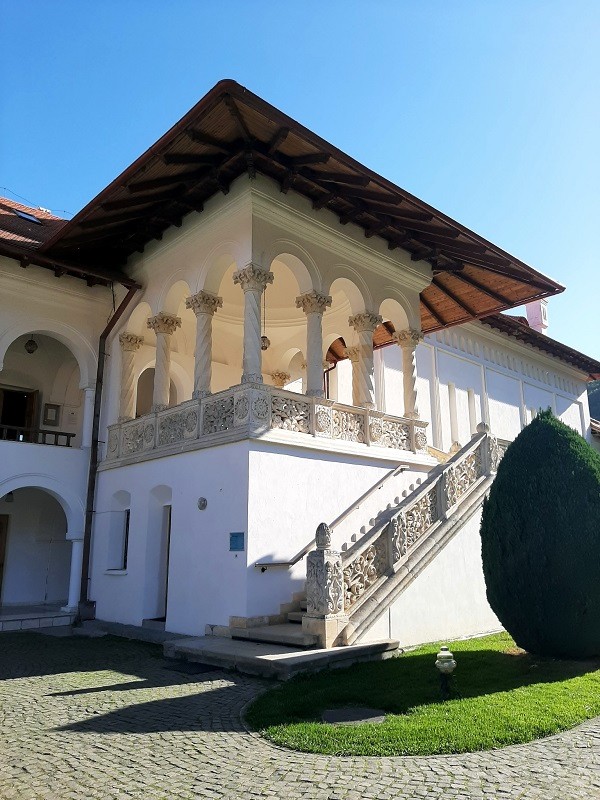

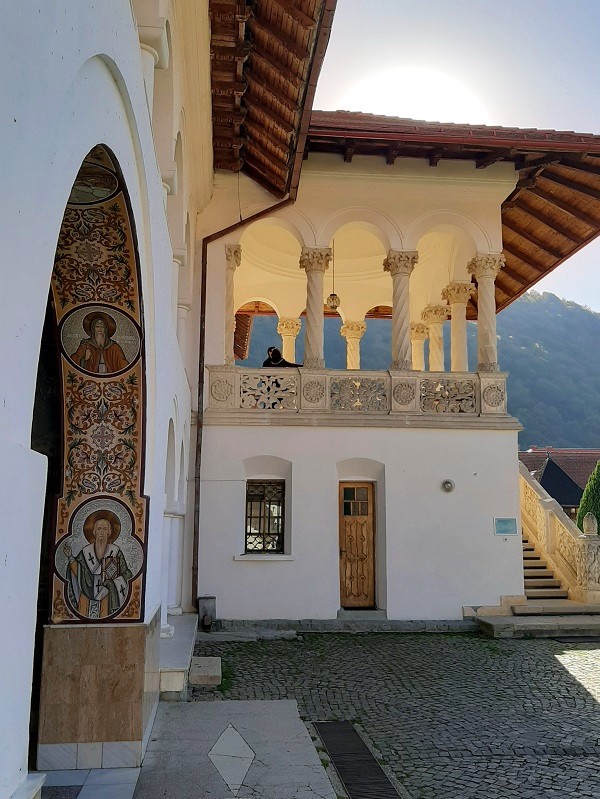
Arcade
The monastery complex features a striking white arcade running along its interior perimeter.
Most of the doors you will find here lead to the monastic cells where the monks live.
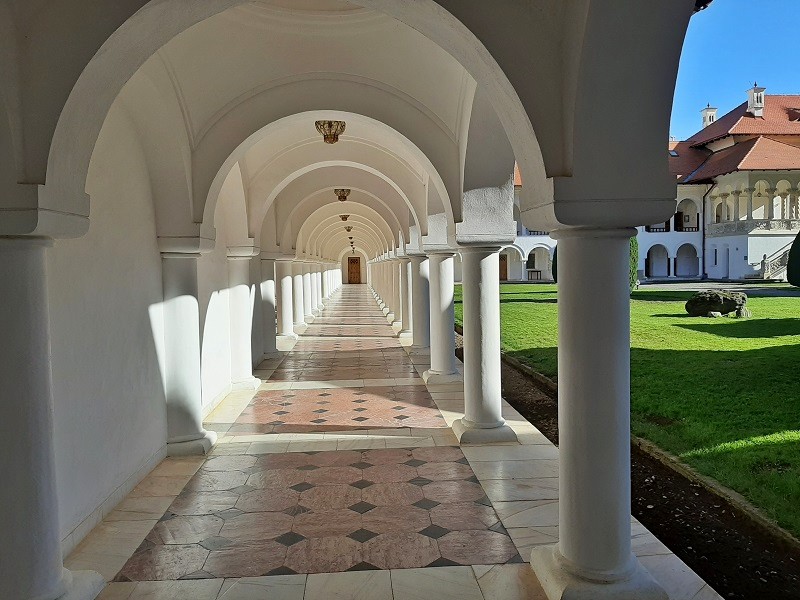
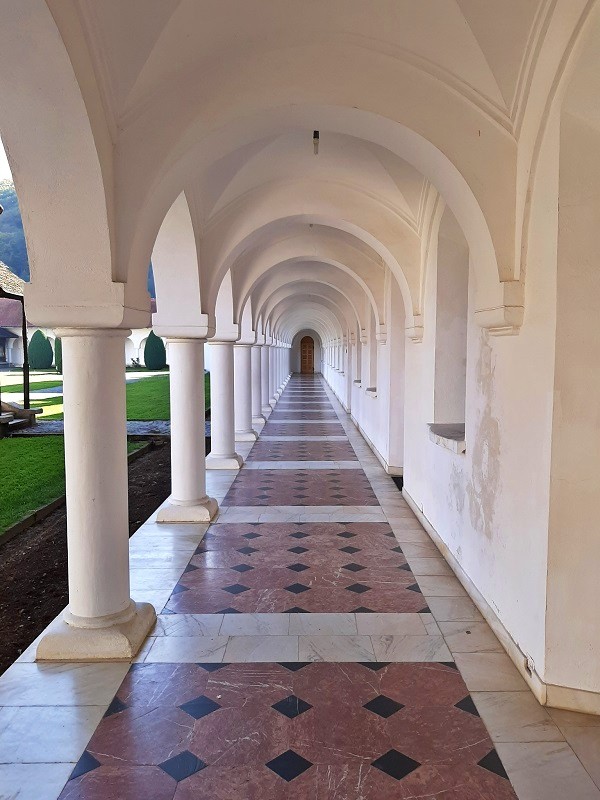

Other monastery buildings
There are a couple of other noteworthy buildings situated around the monastery complex.
Inside the complex right next to the main church, you can find a smaller wooden church.
Just outside the main complex, you can find a large building adorned with a triangular fresco, serving as an Orthodox church academy.


Leaving the monastery
After taking some time to savour the beautiful surroundings of the monastery, I exited once more through the main passage in the gate tower.
On the main road just outside the monastery, you’ll find a couple of souvenir and food stalls.
I couldn’t resist stopping here to eat some lángos, a traditional Hungarian snack made out of a fried flatbread with sour cream, cheese and garlic.
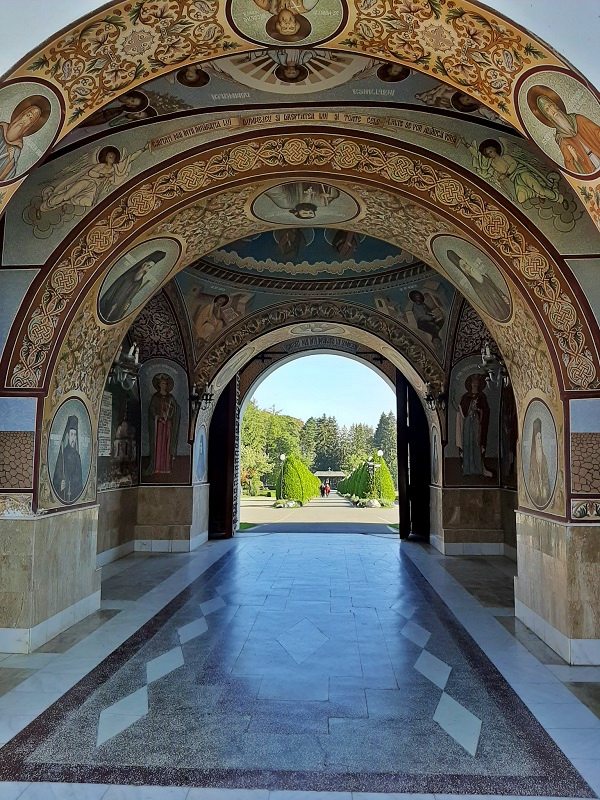


Conclusion
The Brancoveanu Monastery in Sambata de Sus is well-worth a detour for its fine architecture and beautiful setting in the Carpathian foothills.
The monastery in Sambata de Sus is an excellent example of Brancovanesc Architecture, a magnificent blend of Byzantine, Ottoman and Renaissance influences.
Make sure you take your time to admire the beautiful frescoes and the exquisite Brancovanesc-style details of the loggia when you visit the monastery.
Trip report index
This article is part of the ‘Visiting the Saxon Fortified Churches of Transylvania‘ trip report, which consists of the following chapters:
1. The Fortified Church of Harman (Honigberg), Brasov County
2. The Fortified Church of Prejmer (Tartlau), Brasov County
3. The Fortified Church of Feldioara (Marienburg), Brasov County
4. A Visit to Rupea Fortress
5. The Fortified Church of Homorod (Hamruden), Brasov County
6. Racoș: Exploring an Extinct Volcano and Abandoned Castle
7. In the Footsteps of King Charles: A Visit to Viscri, Romania
8. A Visit to the Fortified Church of Viscri, Brasov County
9. A Night Walk Around the Citadel and Old Town of Sighisoara
10. Review: Hotel Casa Wagner, Sighisoara, Romania
11. The Fortified Church of Saschiz (Keisd), Mureș County
12. The Fortified Church of Cloasterf (Klosdorf), Mureș County
13. The Fortified Church of Mesendorf (Meschendorf), Brasov County
14. The Fortified Church of Crit (Deutsch-Kreuz), Brasov County
15. The Fortified Church of Biertan (Birthälm), Sibiu County
16. The Fortified Church of Hosman (Holzmengen), Sibiu County
17. Review: Brukenthal Palace Hotel, Avrig
18. A Visit to Sambata de Sus and the Brancoveanu Monastery (current chapter)
19. Into the Carpathians: A Beautiful Drive to Moieciu de Sus

